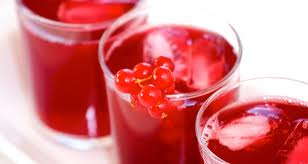Sugar Blues - Part 1

True or False: If a product says no added sugar, it’s sugar free.
That statement is false. It just means the manufacturer didn’t add sugar to a product that may contain naturally occurring sugar from milk (lactose) or fruit (fructose). Foods with natural sugars also provide other nutrients like vitamins, minerals, fiber and anti-oxidants that are healthy for us. A revision to the Nutrition Facts Panel may include added sugars, which will be a better way to determine what foods to minimize. This change won’t be for another year or so.
For bariatric patients, eating too much sugar after surgery can lead to dumping. Sugar is considered “empty calories” because all you get is calories without the vitamins, minerals, antioxidants or fiber that are good for your health. Other problems from sugar include increased triglycerides, decreased HDL (healthy) cholesterol, increased respiration rate, fatty liver, increased blood sugars, cavities and weight gain. Research is beginning to link too much added sugar with heart disease, inflammation, gout and premature wrinkles. Recent research points to people consuming too many added sugars dying from heart disease at twice the rate as for people with low sugar intake, even if the diet is otherwise healthy.
Obvious sources of sugar are the sweets: cookies, cakes, candy, ice cream, desserts and sugar sweetened pop. Sugar sweetened beverages like regular pop, sports drinks and energy drinks account for about a third of the added sugars we consume. Added sugars can also creep into your diet through condiments like catsup and barbeque sauce, salad dressings, canned tomato products, coffee drinks, pastries, smoothies, crackers and ready to eat cereals.
When reading the ingredients label, look for words like anything that ends in “–ose” (sucrose, fructose, maltose, dextrose, xylose etc..), syrup, juice, agave, honey, molasses, caramel, corn sweetener, high fructose corn syrup, evaporated cane guide, cane sugar, brown sugar, barley malt, and beet sugar. You now have information about how to read the label to see if what you are eating or drinking has added sugars. Next week, you’ll find out how to compare products to determine how much added sugar is in something you are eating or drinking.
Keep in mind, “sugar free” doesn’t mean “carbohydrate free”. If the label says “sugar free,” that means that the product has less than ½ gram of sugar per serving. The product can still be high in carbohydrates. Sugar alcohols are often used as a sweetener because they don’t usually raise blood sugars. However, sugar alcohols can have 1.5 to 3 calories per gram. Evaluate you habits before adding in treat foods. Is your overall nutrition in the healthy range? Are you disciplined with your eating and supplements? Are you getting regular exercise? An occasional small treat might be reasonable based on evaluating your overall eating and exercise habits. Consider working with your bariatric program’s dietitian to see how these foods might be worked into your food plan.
To view the comparison chart, please visit Sugar Blues Part 2 here: http://www.bariatricpal.com/page/articles.html/_/healthy-living/food-nutrition/sugar-blues-part-2-r336




amponder 396
Posted
I am curious about sugar free products such as jellies jams and desserts for diabetics, and what it means when It lists sugar alcohol levels does that raise your sugar? for a lapband patient would those things be okay as a treat in small amounts?
Share this comment
Link to comment
Share on other sites